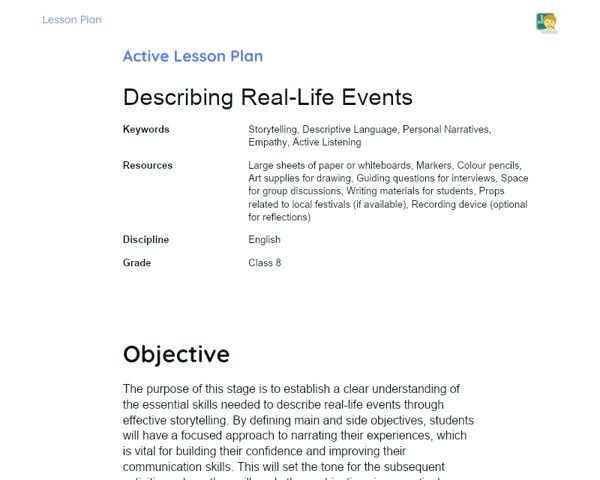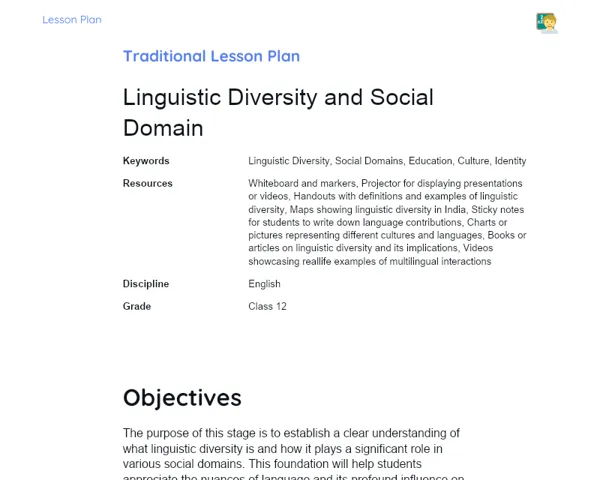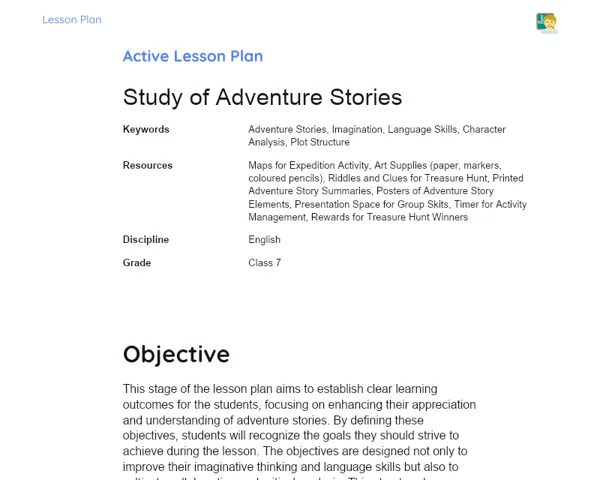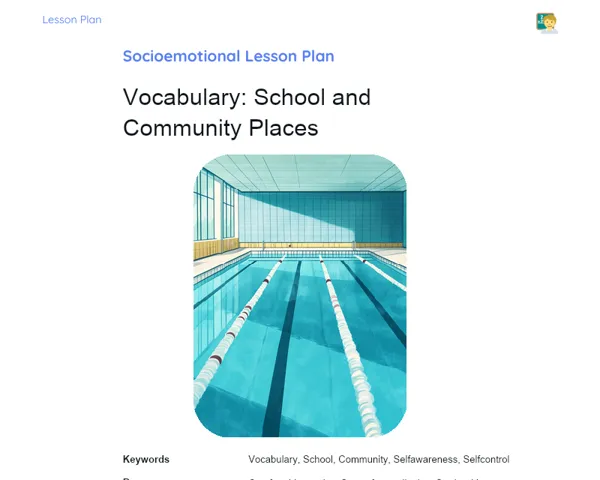Lesson Plan | Active Methodology | Acting in short skits
| Keywords | Active Learning, Skit Acting, Creativity, Communication Skills, Teamwork, Cultural Awareness, Local Expressions, Character Development, Interactivity, Group Collaboration |
| Necessary Materials | Lists of characters for skits (e.g., vendors, customers, historical figures), Props for skits (e.g., costumes, handmade items reflecting local culture), Space for group performances (open area for presentation), Stationery for brainstorming (notebooks, markers), Audio equipment if needed (for music or sound effects), Visual aids depicting local festivals or historical figures, Sample dialogues or scripts for reference |
Premises: This Active Lesson Plan assumes: a 100-minute class duration, prior student study both with the Book and the beginning of Project development, and that only one activity (among the three suggested) will be chosen to be carried out during the class, as each activity is designed to take up a large part of the available time.
Objectives
Duration: (10 - 15 minutes)
The purpose of this stage is to set clear learning goals that guide the students in understanding the importance of creativity and communication skills in acting. By defining these objectives, students will be aware of what they are expected to achieve during the lesson, and it will help them focus on their roles in the skits.
Main Objectives:
1. Enhance creativity by encouraging students to come up with original ideas for their skits.
2. Develop communication skills through collaboration and performance in front of peers.
Side Objectives:
- Foster teamwork by having students work in groups to create their skits.
Introduction
Duration: (15 - 20 minutes)
The purpose of this stage is to engage students by presenting relatable problem situations that encourage them to reflect on their prior learning about skits. By contextualizing the importance of communication and creativity in acting, students will better understand how these skills apply not only in performances but also in everyday interactions. This will prepare them for the upcoming collaborative activities.
Problem-Based Situation
1. Imagine one student forgot their role in the skit at the last minute. How do you think the group can come together to help and support each other in that moment?
2. Consider a scenario where two different groups have created skits with similar themes. How can they ensure that their presentations are unique and reflect their own creativity?
Contextualization
Acting in skits can be a fun way to express thoughts and emotions. In real life, communication and creativity are vital for success in many fields, from storytelling in movies to presenting ideas in school. For instance, local theatre groups in India often depict cultural stories that highlight community values and traditions. These performances not only entertain but also educate audiences about their heritage and current social issues. Engaging in skits allows students to experience this art form while developing skills that are important in their everyday lives.
Development
Duration: (75 - 85 minutes)
The purpose of this development stage is to provide students with a hands-on opportunity to apply their creativity and communication skills in a collaborative environment. By engaging in skit preparation and performance, students can express themselves, learn from one another, and enhance their understanding of acting and cultural narratives. This active participation not only cements their learning but also fosters a sense of teamwork and fun.
Activity Suggestions
It is recommended that only one of the suggested activities be carried out
Activity 1 - The Magical Market of Characters
> Duration: (60 - 70 minutes)
- Objective: To enhance students' creativity and communication skills by allowing them to explore character development and dialogue in a lively market setting.
- Description: In this activity, students will create a short skit based on a bustling market scene filled with various characters. Each group will select three characters from a long list (e.g., a chatty vendor, a curious customer, and a mischievous monkey) and develop a 3-minute skit where they interact in humorous and insightful ways. The setting will be a vibrant local market, reflecting the rich culture of India, and students will need to incorporate local dialects and expressions in their dialogues.
- Instructions:
-
- Divide the class into groups of 5.
-
- Provide each group with a list of market characters to choose from.
-
- Allow 15 minutes for groups to brainstorm and assign roles.
-
- Instruct groups to create their skit, ensuring it lasts around 3 minutes, including a beginning, middle, and end.
-
- Encourage groups to practice their skits with emphasis on character interaction and local expressions.
-
- Each group performs their skit in front of the class.
Activity 2 - The Time-Traveling Storyteller
> Duration: (60 - 70 minutes)
- Objective: To strengthen students' understanding of Indian history while fostering cooperative learning and performance skills.
- Description: Students will work together to create a skit where a storyteller travels through various historical periods in India, meeting famous figures (like Rani Lakshmibai or Dr. B.R. Ambedkar) at each stage. The skit should incorporate elements of history and allow students to creatively express their understanding of these figures in a fun narrative format.
- Instructions:
-
- Split the class into groups of 5.
-
- Give each group a list of historical figures to choose from.
-
- Allow 15 minutes for brainstorming how their storyteller will travel through time and interact with these figures.
-
- Each group should create a 3-minute skit showcasing dialogues and actions.
-
- Remind students to be expressive and make use of creative props to enhance their performance.
-
- Groups then present their skits to the class.
Activity 3 - Celebration of Cultures
> Duration: (60 - 70 minutes)
- Objective: To promote cultural awareness and expression through acting, while enhancing teamwork and creativity in students.
- Description: In this scenario, students will create a skit that celebrates a local festival (like Diwali or Onam). They will depict the preparations, the emotions tied to the festival, and the interactions among families and friends. This will include elements of song, dance, and dialogue to reflect the joyous nature of the celebration.
- Instructions:
-
- Organize students into groups of 5.
-
- Each group picks a festival to portray from a list provided.
-
- Allocate 15 minutes for them to discuss and plan the main events to showcase in their skit.
-
- Encourage groups to incorporate traditional songs or dances into their performance.
-
- Each group's skit should last approximately 3 minutes and be filled with expressive dialogues.
-
- Finally, groups perform their creations to the rest of the class.
Feedback
Duration: (10 - 15 minutes)
The purpose of this feedback stage is to encourage students to reflect on their learning experiences, articulate their insights, and share lessons learned from collaborating on their skits. This discussion fosters a sense of community and teamwork while reinforcing the key skills of creativity and communication that were developed throughout the lesson. By sharing their thoughts and experiences, students can also gain new perspectives from their peers, further enriching their educational journey.
Group Discussion
Alright, everyone! Now that we have enjoyed so many delightful skits, let’s take a few moments to reflect on our experiences. I invite each group to share what they learned during the process of creating and performing their skits. Think about the challenges you faced, the fun moments, and how you worked together as a team. Who would like to start us off?
Key Questions
1. What was your favourite part of the skit creation process, and why?
2. How did working in a group help you improve your acting skills?
3. What new things did you learn about your classmates through this experience?
Conclusion
Duration: (10 - 15 minutes)
The purpose of this stage is to encapsulate the lesson's key takeaways and reinforce how the skills learned through skit acting contribute to personal growth and effective communication. By summarizing the experiences shared, connecting theoretical knowledge with practical applications, and emphasizing the importance of these skills in daily life, students will leave the lesson with a clearer understanding of their learning journey and its significance.
Summary
In today’s lesson, students deeply engaged with the dynamics of acting through vibrant skits that showcased their creativity and communication skills. They embraced various cultural settings, from bustling markets to historical narratives, highlighting their understanding of local traditions and expressions. By working collaboratively, they not only developed their acting abilities but also built teamwork, reflected on their experiences, and celebrated the rich tapestry of Indian culture through performance.
Theory Connection
The lesson seamlessly integrated theory with practice as students moved from understanding the elements of skits to applying them in real-life scenarios. They learned about character development, dialogue creation, and the use of local dialects, which bridged their theoretical knowledge with the hands-on experience of acting. This active learning methodology allowed them to witness firsthand the importance of communication in storytelling, which is essential in both personal and professional contexts.
Closing
As we conclude, it becomes clear that the skills developed through skit acting extend far beyond the classroom. The ability to express oneself, work as a team, and creatively solve problems is vital not only in acting but also in everyday life. Whether sharing stories with friends or presenting ideas in school and future careers, these skills are integral to fostering meaningful connections and interactions. Remember, every time you act out a story, you are not just performing; you are communicating a piece of your world.



